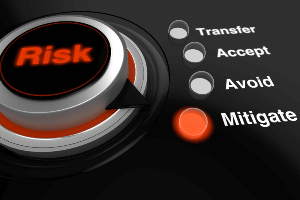 Accident victims have a duty to act in a reasonable manner to ensure their own wellbeing by trying to prevent the worsening of an injury. However, you cannot be denied compensation simply because you failed to take certain precautions, like wearing a seat belt or waiting a few days to get medical treatment.
Accident victims have a duty to act in a reasonable manner to ensure their own wellbeing by trying to prevent the worsening of an injury. However, you cannot be denied compensation simply because you failed to take certain precautions, like wearing a seat belt or waiting a few days to get medical treatment.
Failure to mitigate damages is a common insurance company defense tactic to deny or devalue accident claims filed by people who have been injured by someone else’s negligent actions. Our South Bend personal injury lawyers know the legal requirements for this defense and are prepared to help you fight back against the insurance company.
Call us today to schedule a free consultation to discuss your claim and learn more about your legal options.
What Steps Can Accident Victims Take to Mitigate Damages?
Mitigation of damages means you have taken reasonable care to minimize the effects of an injury and the losses you suffered because of it. There are some steps accident victims are expected to take after an accident, including:
- Moving your vehicle off the roadway
- Seeking appropriate medical attention
- Keeping up with medical treatment
- Following doctors’ orders
However, there are also some mitigation efforts that can be made before an accident or injury occurs, such as:
- Wearing a seat belt
- Defensive driving
- Focused driving
While these things are important, the insurance company cannot deny you compensation solely because of your failure to do one of these things. If they do attempt to reject your claim for something like lack of seat belt use, for example, the burden of proving that it was the sole reason for your injuries falls on them. The insurance company might get away with not having to pay for treatments on your nose if your face slammed into the dashboard, as that may have been prevented by wearing a safety restraint. However, an injury to your neck, back or legs might have occurred with or without your use of a seat belt.
Failing to seek medical treatment for several days after the crash may not be a good idea, but for some accident victims their symptoms do not appear for a few days. It could be reasonable for a person to think he or she is fine immediately after an accident only to experience pain once the adrenaline has worn off.
The steps injury victims can take to mitigate damages may vary depending on the facts of the case. It is important that you discuss your claim with an attorney right away to determine how to protect the value of your claim.
Who Decides Whether Damages Were Mitigated?
Ultimately, whether you took the right steps to mitigate your damages and are entitled to recover full compensation comes down to a judge or jury if a lawsuit is filed and the case makes it to court. If the liable party successfully argues that you failed to mitigate your damages during the pre-trial process, a judge can provide failure to mitigate instructions to the jury which could ultimately result in reduced compensation.
However, since most injury claims do not make it to court, it is important that you build a strong case against the liable party from the moment your claim is filed. Not just to prove the at-fault party acted negligently, but also to prove that you took the reasonable steps to prevent the accident or exacerbating your injuries.
What if an Injury Victim Fails to Mitigate Damages?
If the liable insurance company is successful in proving that you failed to mitigate your damages, your compensation may be reduced, according to Indiana law.
The number by which your compensation may be reduced varies, as this is typically decided on a case-by-case basis. Generally, a court will not force the liable party to pay damages that could have been avoided. For example, the cost of surgery if an ailment could have been resolved earlier had the accident victim sought proper medical care in a timely manner.
What is the Difference Between Comparative Fault and Mitigation of Damages?
These two legal standards differ for various reasons. For one, comparative negligence removes liability from the at-fault party up to a certain extent since the injury victim was partially to blame for the accident. For example, if he or she was speeding before a collision with a driver who failed to yield.
Mitigation of damages does not remove any liability from the at-fault party. Instead, it is a defensive argument, also known as an affirmative defense, from the liable party to reduce damages he or she must pay to the injury victim.
Call an Experienced Attorney
When the insurance company tries to invoke the mitigation of damages defense to try and pay out less than the value of your claim, it would be in your best interest to work with an experienced attorney. Our lawyers understand this tactic and are prepared to fight back against it.
For decades our attorneys have helped build strong cases for compensation on behalf of our clients and have helped them secure millions. Let us help you.
Call (574) 444-0741 to learn more.












